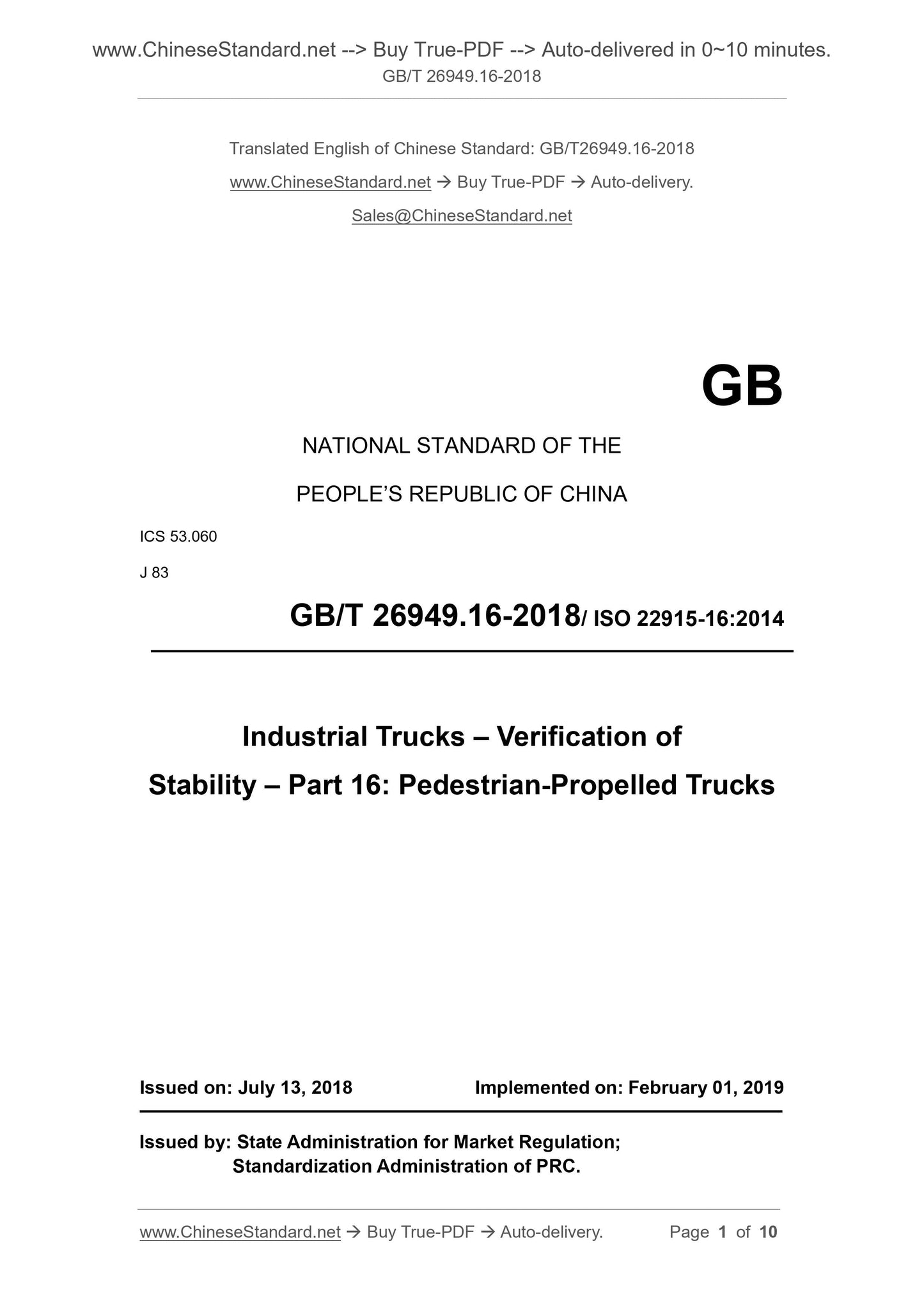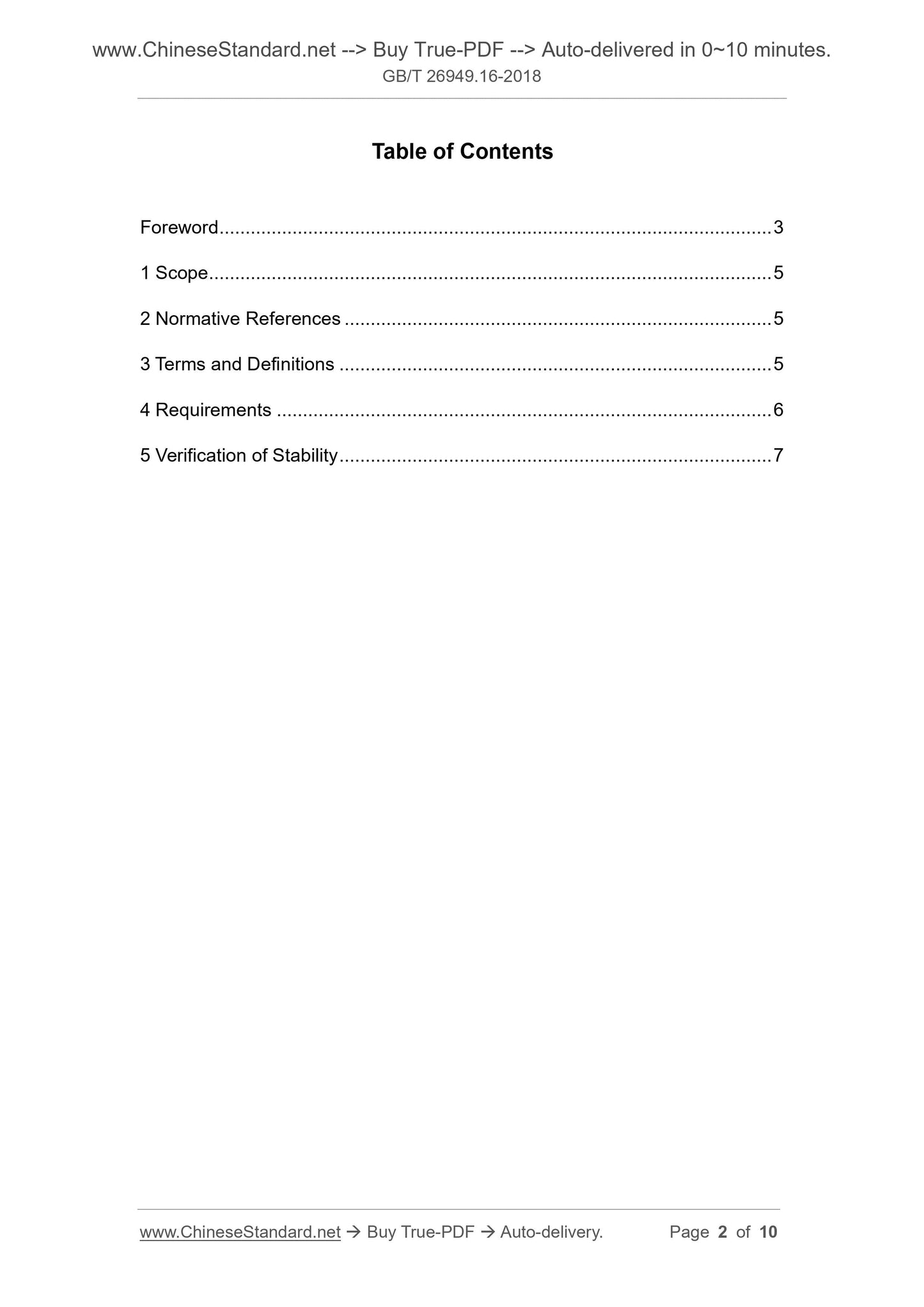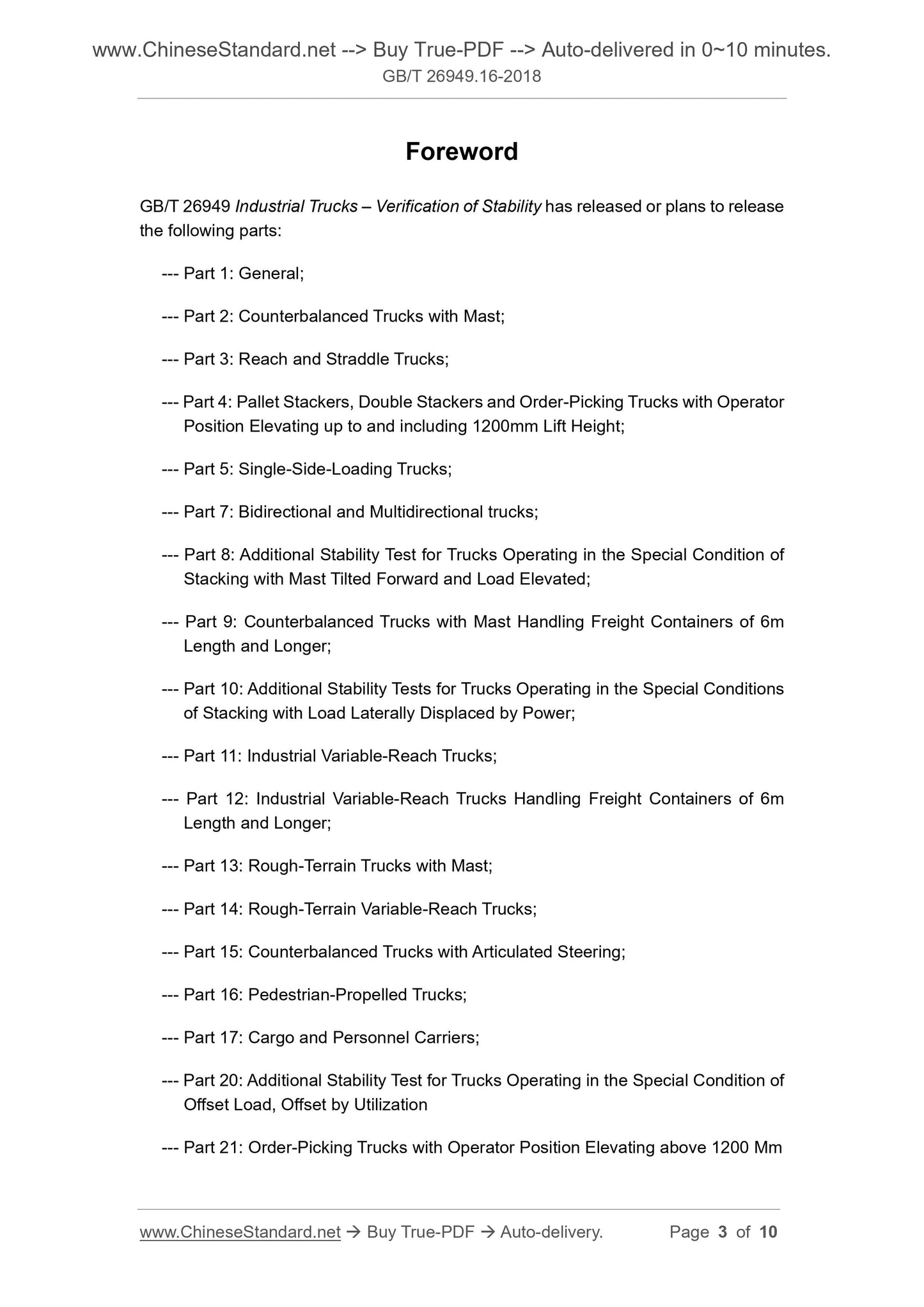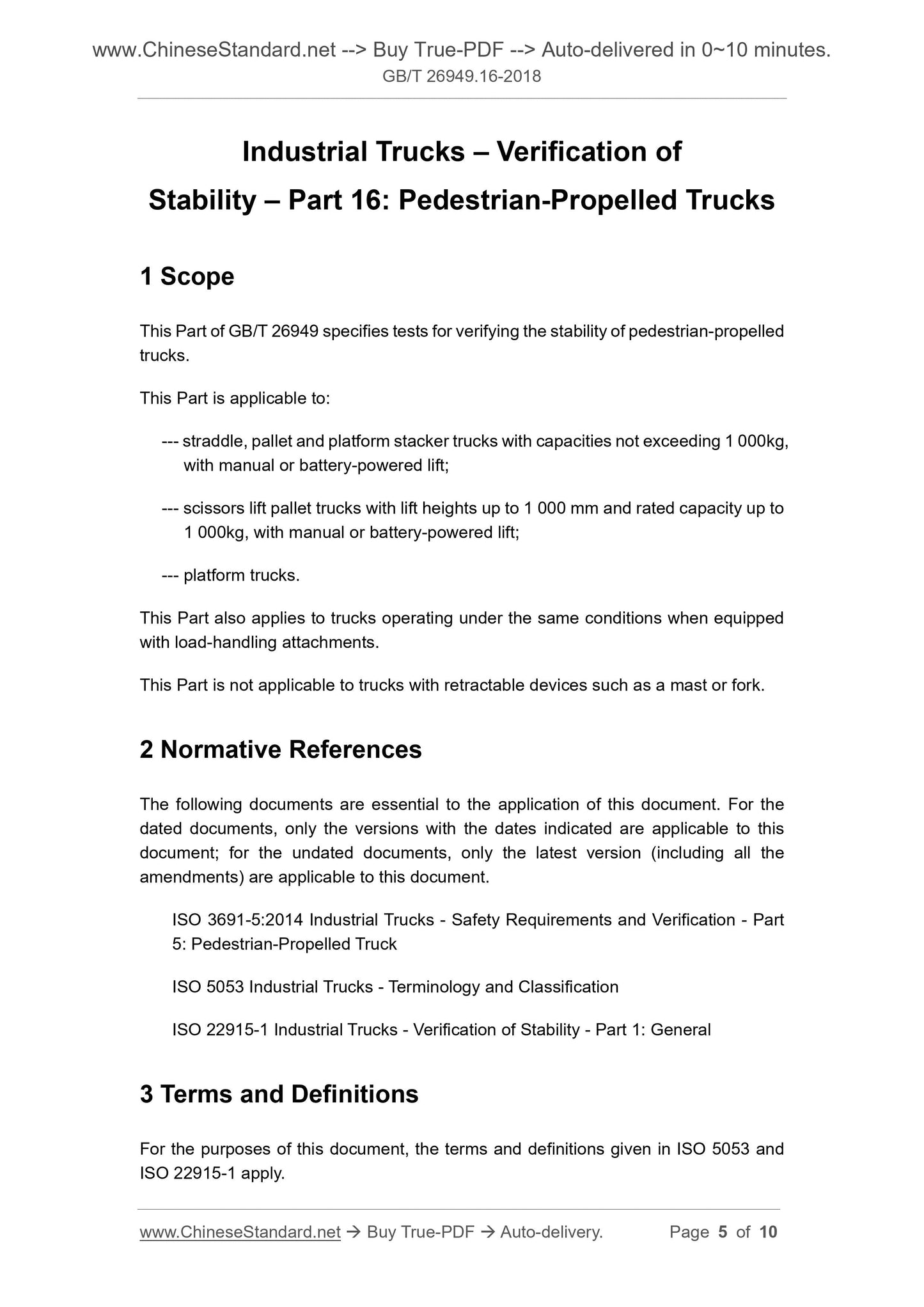1
/
of
4
www.ChineseStandard.us -- Field Test Asia Pte. Ltd.
GB/T 26949.16-2018 English PDF (GB/T26949.16-2018)
GB/T 26949.16-2018 English PDF (GB/T26949.16-2018)
Regular price
$140.00
Regular price
Sale price
$140.00
Unit price
/
per
Shipping calculated at checkout.
Couldn't load pickup availability
GB/T 26949.16-2018: Industrial trucks -- Verification of stability -- Part 16: Pedestrian-propelled trucks
Delivery: 9 seconds. Download (and Email) true-PDF + Invoice.Get Quotation: Click GB/T 26949.16-2018 (Self-service in 1-minute)
Newer / historical versions: GB/T 26949.16-2018
Preview True-PDF
Scope
This part of GB/T 26949 specifies the test method for verifying the stability of walking vehicles.This section applies to.
---Plug-in, pallet and platform stacking vehicles with a weight of not more than 1000kg or with a battery as the lifting force;
--- Manual lifting with a lifting height of not more than 1000mm and rated lifting capacity of not more than 1000kg or shearing with battery as lifting force
Fork pallet handling vehicle;
--- Platform vehicles.
This section also applies to vehicles equipped with load handling attachments under the same operating conditions.
This section does not apply to vehicles with retractable devices such as retractable gantry or retractable forks.
Basic Data
| Standard ID | GB/T 26949.16-2018 (GB/T26949.16-2018) |
| Description (Translated English) | Industrial trucks -- Verification of stability -- Part 16: Pedestrian-propelled trucks |
| Sector / Industry | National Standard (Recommended) |
| Classification of Chinese Standard | J83 |
| Classification of International Standard | 53.060 |
| Word Count Estimation | 10,198 |
| Date of Issue | 2018-07-13 |
| Date of Implementation | 2019-02-01 |
| Issuing agency(ies) | State Administration for Market Regulation, China National Standardization Administration |
Share







